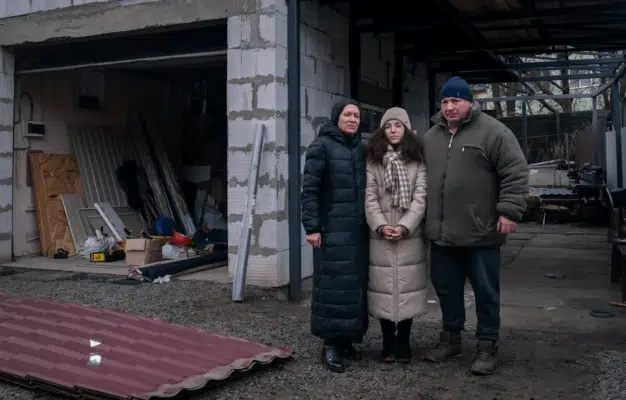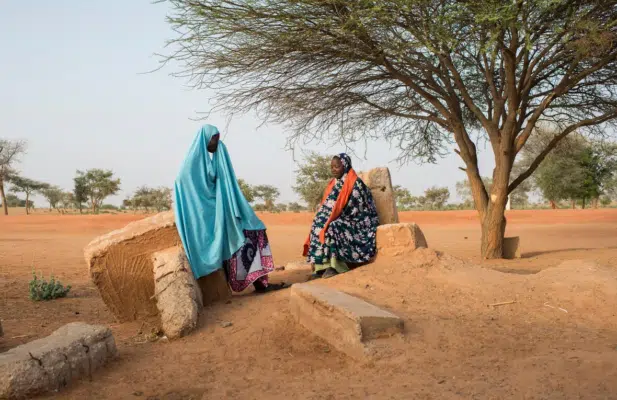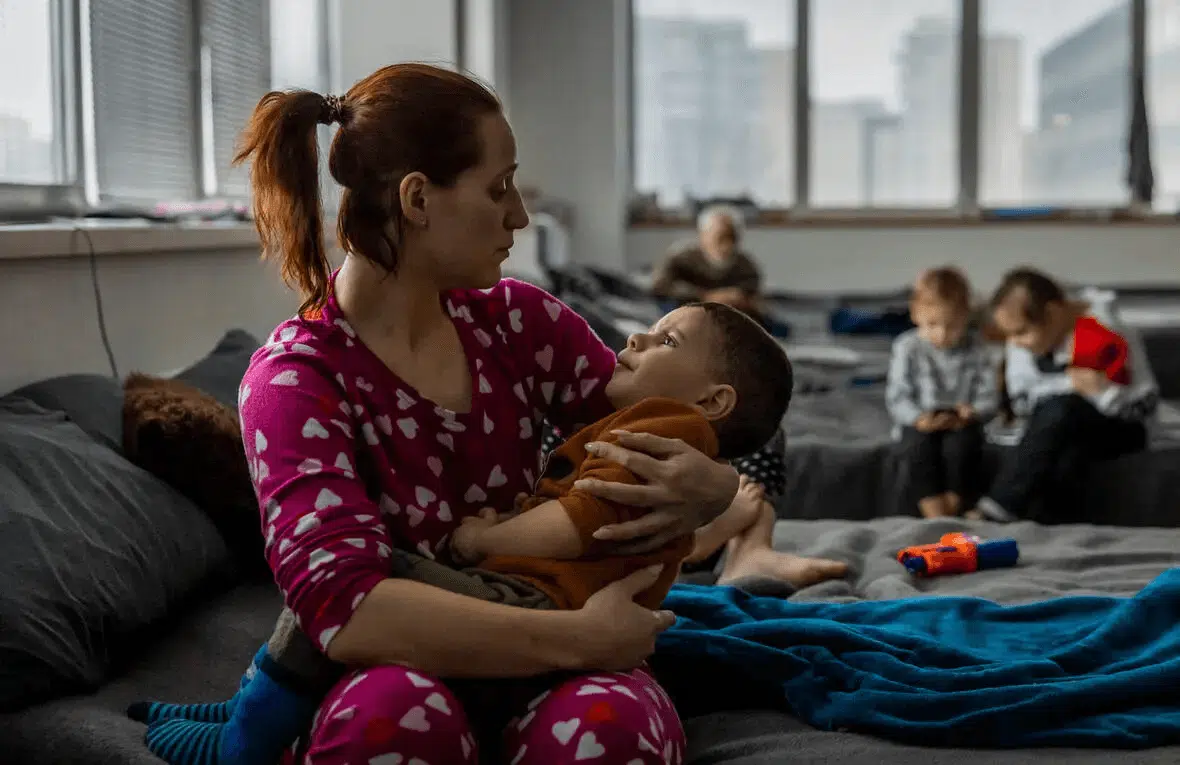
Ukrainian refugee Katerina is pictured in December 2022 holding her son Arsen in a collective centre where they lived with 400 other refugees in Kraków, Poland. © UNHCR/Anna Liminowicz
As new data reveal the highest-ever annual increase in global forced displacement, a collection of UNHCR photographs from 2022 highlights the key themes and emergencies behind the figures.
Last year, more people than ever were uprooted from their homes by war, persecution and human rights abuses. According to the UN Refugee Agency’s annual Global Trends report, by the end of 2022 the number of forcibly displaced people was estimated at 108.4 million – up by 19 million from the end of 2021. This represents the largest year-on-year increase since UNHCR began compiling statistics on forced displacement.
Much of the increase was driven by the war in Ukraine. The Russian Federation’s full-scale invasion of Ukraine in February 2022 created the fastest outflow of refugees recorded since World War II. But conflict and insecurity in other parts of the world, including Afghanistan, the Democratic Republic of the Congo, Syria and Myanmar, all contributed to the record rise. Meanwhile, the increasing frequency of weather-related disasters linked to climate change, including droughts and flooding, drove further displacement on a scale not seen before.
Less than half of those forced to flee crossed an international border. Of the global total, 58 per cent were displaced within their own countries. Of those that did cross borders, 70 per cent remained in the mostly low-and middle-income countries neighbouring their own.
The relentless upward trajectory in global forced displacement shows no sign of slowing in 2023 with the eruption of a new conflict in Sudan in April, and ongoing violence, political upheaval and climate-fueled crises continuing to force people from their homes in many other parts of the world.
Below is a collection of UNHCR photography from 2022 highlighting 10 of the key themes and crises behind the data in the Global Trends report.
Ukraine crisis
A young Ukrainian mother carries her 3-month-old baby and 3-year-old toddler across the Tiszabecs border crossing into Hungary on 27 February 2022, after she fled Ukraine leaving her husband behind. The biggest driver of new forced displacement was the ongoing war in Ukraine, which last year forced 5.7 million people to flee the country and displaced millions more inside Ukraine.
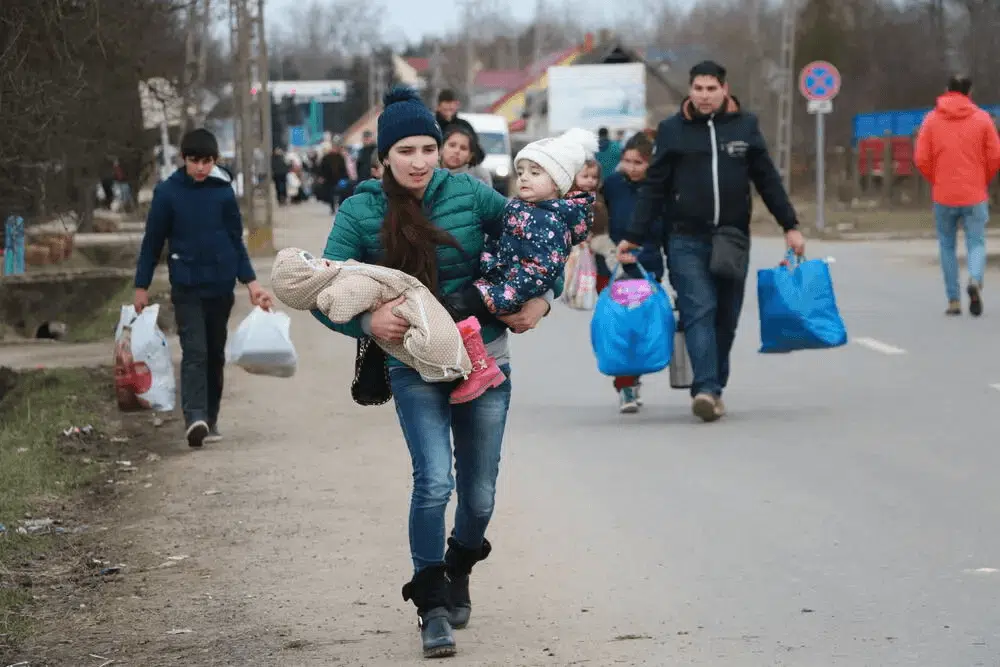
© UNHCR/Zsolt Balla
A young Ukrainian mother carries her 3-month-old baby and 3-year-old toddler across the Tiszabecs border crossing into Hungary on 27 February 2022, after she fled Ukraine leaving her husband behind. The biggest driver of new forced displacement was the ongoing war in Ukraine, which last year forced 5.7 million people to flee the country and displaced millions more inside Ukraine.
Climate-related displacement
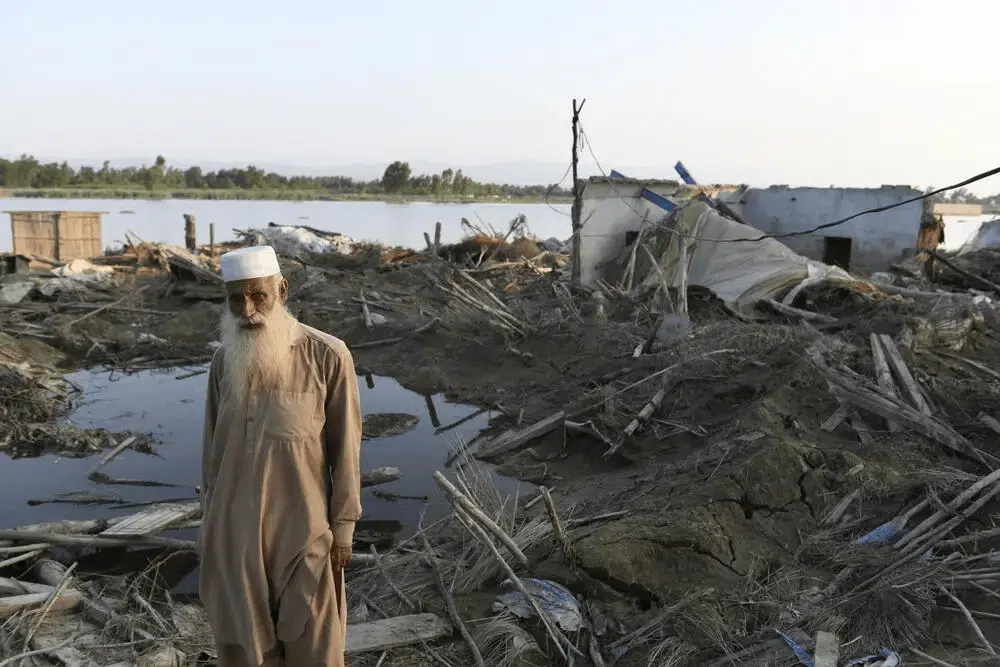
© UNHCR/Usman Ghani
Afghan refugee Bahadur, 60, stands amid the wreckage of his former home on the banks of the Kabul River in Pakistan’s northwestern Khyber Pakhtunkhwa province in late August 2022. Months of torrential monsoon rains caused the river to overflow a nearby embankment, sweeping Bahadur’s home away in a matter of minutes. Around 8.2 million people were internally displaced by last year’s floods in Pakistan – globally, the largest number forced to flee in the context of disasters and climate change in 2022. Pakistan’s meteorological department said the severity of last year’s monsoon rains and subsequent flooding was made more likely by climate change.
Internal displacement
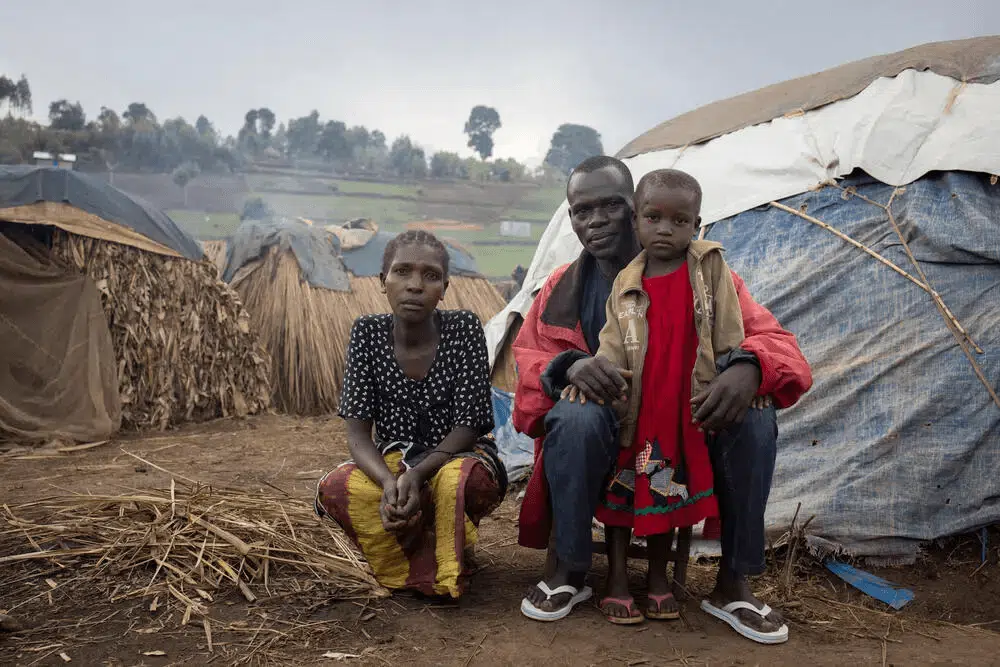
© UNHCR/Hélène Caux
Odette, 4, (right) with her parents in Plaine Savo internal displacement site in the Democratic Republic of the Congo’s Ituri province. Odette suffered machete wounds to her head when armed men attacked the camp on 1 February 2022, killing 62 people and injuring dozens more. Globally, the number of people displaced internally by conflict rose by 18 per cent in 2022 to 62.4 million, driven by conflicts in Ukraine, DR Congo, Ethiopia and Myanmar.
Voluntary returns
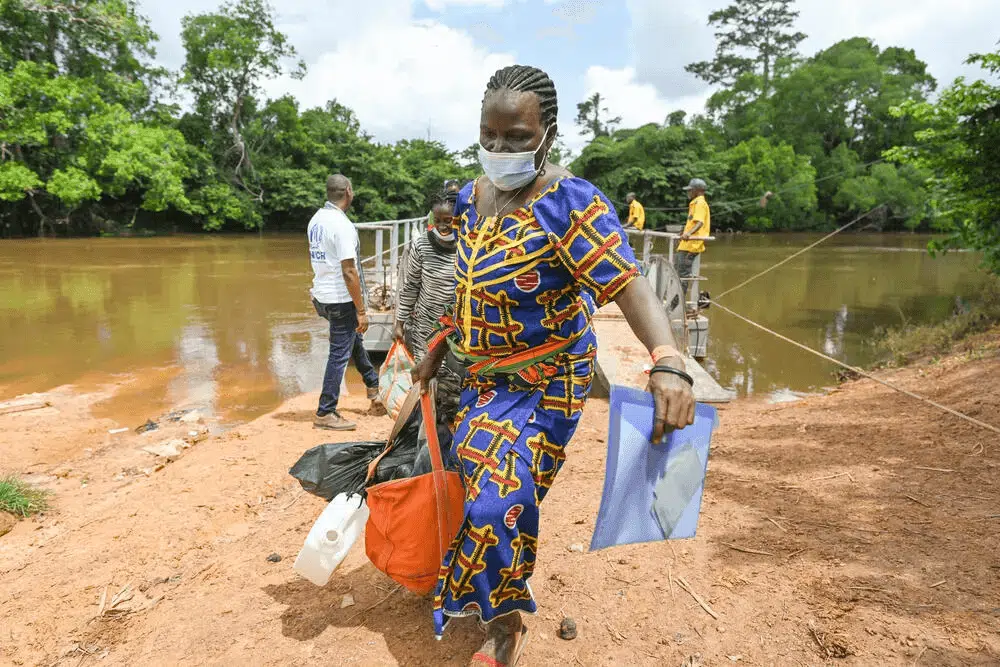
© UNHCR/Colin Delfosse
Former Ivorian refugees return home to Côte d’Ivoire in June 2022 having lived for more than a decade in neighbouring Liberia. Some 340,000 Ivorians sought safety in other parts of West Africa following two civil wars between 2002-2007 and 2011-2012, but increased political stability in the country has led most to voluntarily return home over the past decade. Globally, refugee returns fell by 21 per cent last year to 339,000, though in addition to Côte d’Ivoire there were significant returns of refugees to South Sudan, Syria and Cameroon.
West and Central Africa floods
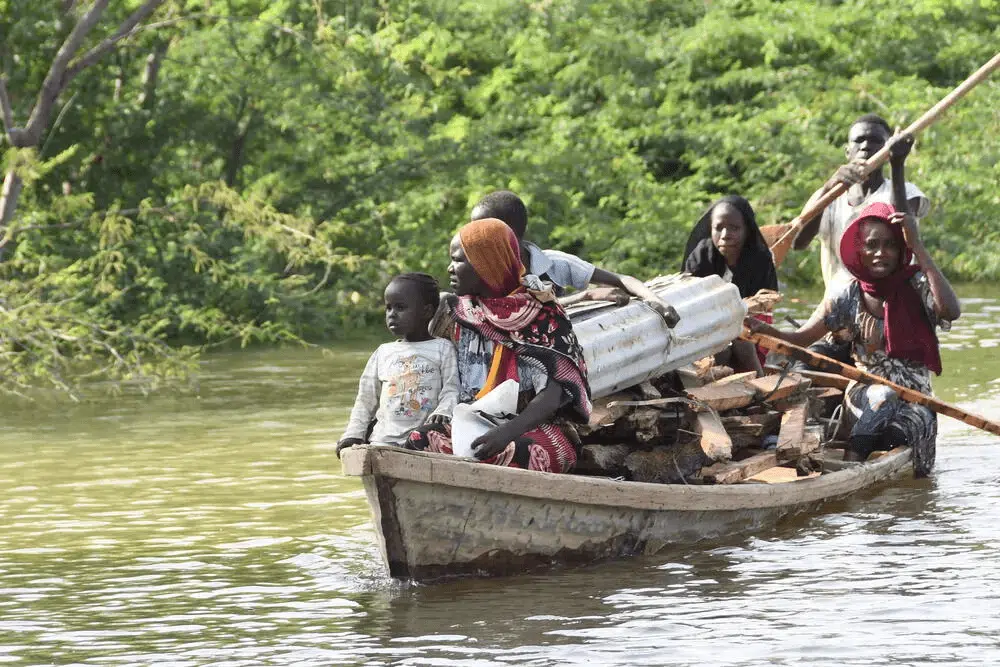
© UNHCR/Moise Amedje Peladai
A family escapes flooding in Cameroon’s Far North region with all that remains of their house. Flooding across Western and Central Africa in October 2022 displaced more than 3.4 million people. Nigeria faced its worst floods in a decade while Chad declared a state of emergency after heavy rains caused two rivers to burst their banks. In the Central Sahel – Burkina Faso, Mali and Niger – flooding killed hundreds and displaced thousands, including those already displaced. Temperatures in the Sahel are rising 1.5 times faster than the global average, exacerbating other challenges in the region such as the growing frequency of attacks by armed groups.
Resettlement
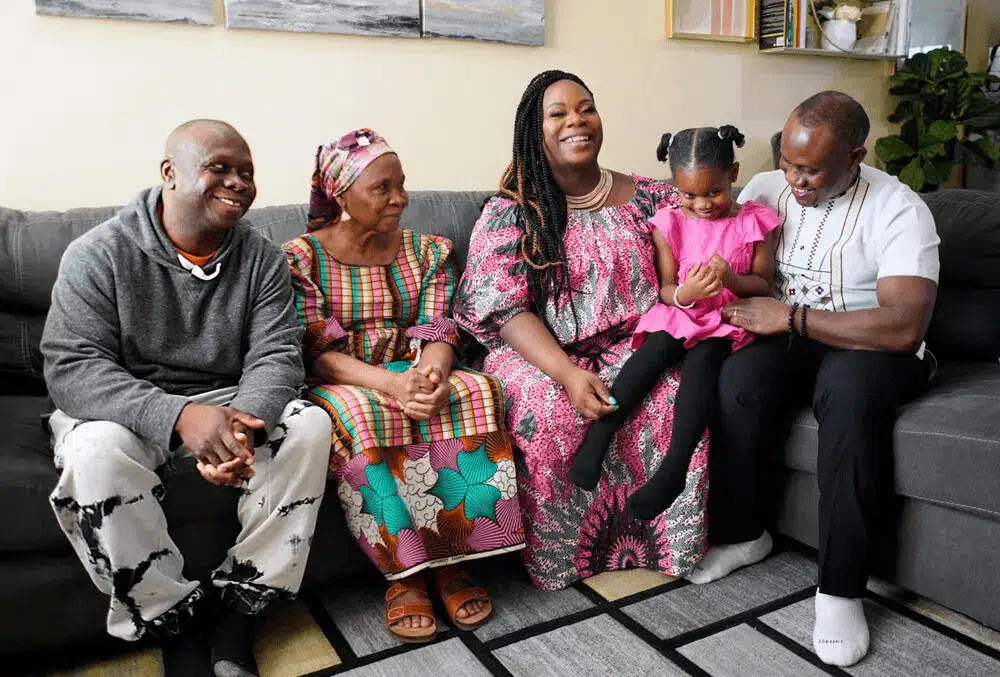
© UNHCR/Ashley Le
Lourena Gboeah (centre) and her family fled the civil war in Liberia in 1990 and became refugees in Côte d’Ivoire. Two years later, she and her family were resettled to the United States. Today, Lourena is a social worker and leading refugee advocate, serving as Board chair for Refugee Congress and Board member for Refugee Council USA. In 2022, 114,300 refugees were resettled to third countries – double the number in 2021 and in line with pre-COVID figures. Canada received the highest number of resettled refugees at 47,600, followed by the United States at 29,000 and Australia at 17,300.
Statelessness
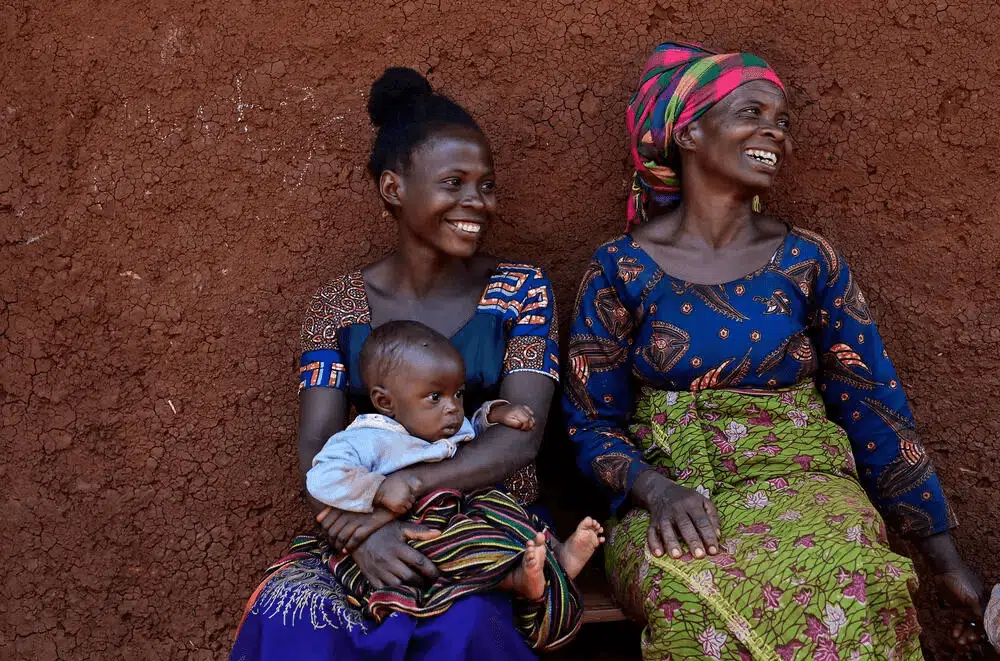
© UNHCR/Anthony Karumba
Burundian refugee Evangelina Bukuru (left) sits with her mother and baby daughter outside their home in Nyarugusu refugee camp in Tanzania’s Kigoma province. Evangelina benefitted from a UNHCR initiative to secure Tanzanian birth certificates for her children to protect them from statelessness. The number of confirmed stateless people worldwide rose by 2 per cent in 2022 to 4.4 million, due mainly to improved registration. That figure is an underestimate as half of the world’s countries do not provide data on statelessness. Last year, 13 countries improved laws, policies and procedures to reduce or prevent statelessness.
Syria crisis
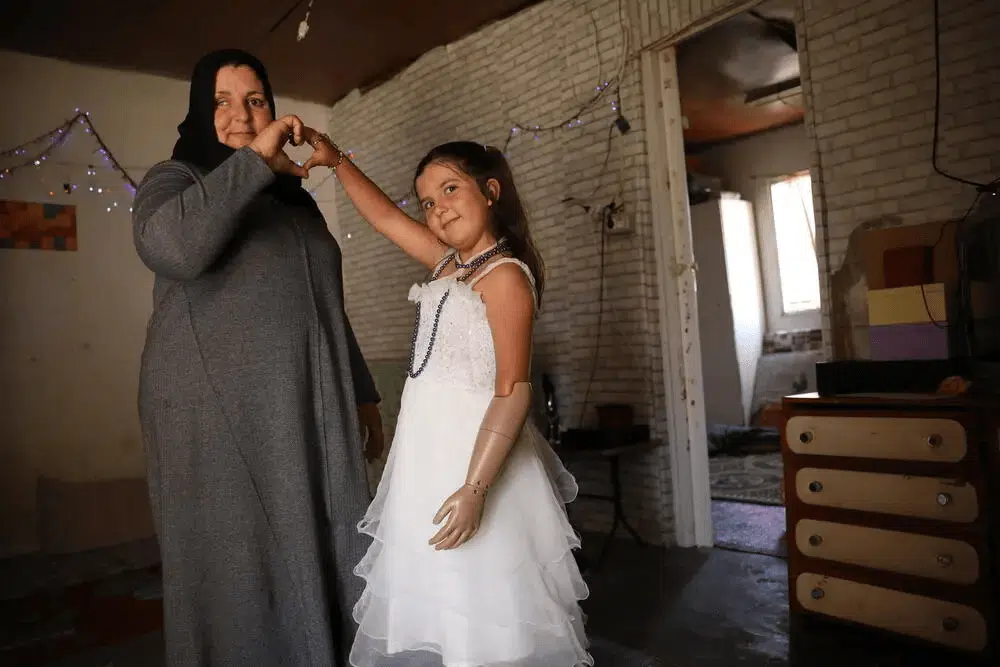
© UNHCR/Houssam Hariri
Sarah, 8, and her mother Safiyah fled the conflict in Syria with the rest of their family and found safety in neighbouring Lebanon. Born without a forearm, Sarah is being supported with a prosthesis. The country’s economic crisis has placed a huge strain on both Lebanese citizens and Syrian refugees in the country, but Safiyah says her daughter’s positivity is a source of hope despite their difficult situation. More than a dozen years since the start of the crisis, Syria still accounts for the largest number of refugees globally at more than 6.5 million. More than two thirds of all refugees and others in need of international protection worldwide originate from just four countries: Syria, Ukraine, Afghanistan and Myanmar.
Venezuela situation
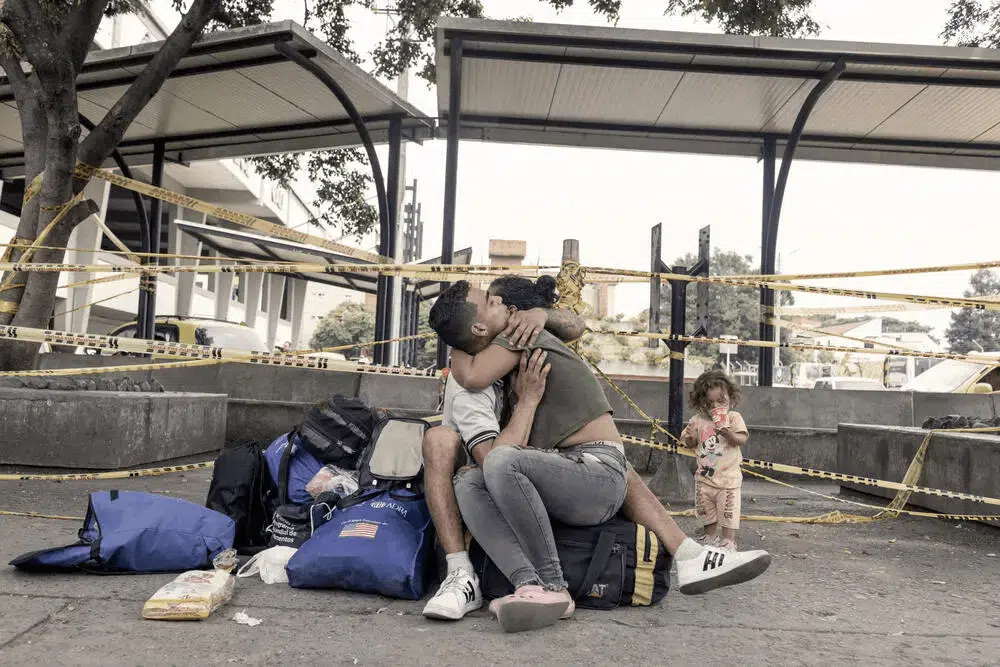
© UNHCR/Nicolo Filippo Rosso
María Fernanda Artigas hugs her partner Endry Cordero Ávila, as her 17-month-old daughter, Jerley, has a cold drink outside the bus terminal in Cali, Colombia. The family were on their way back to their native Venezuela after several years bouncing between South American countries in a failed search for stability. The number of Venezuelans classified as refugees or other people in need of protection rose to 5.5 million at the end of 2022 as Colombia and Peru revised their population estimates. Colombia hosts 2.5 million refugees and other people in need of international protection, most of whom are Venezuelans – the largest number in the Americas region.
Horn of Africa drought
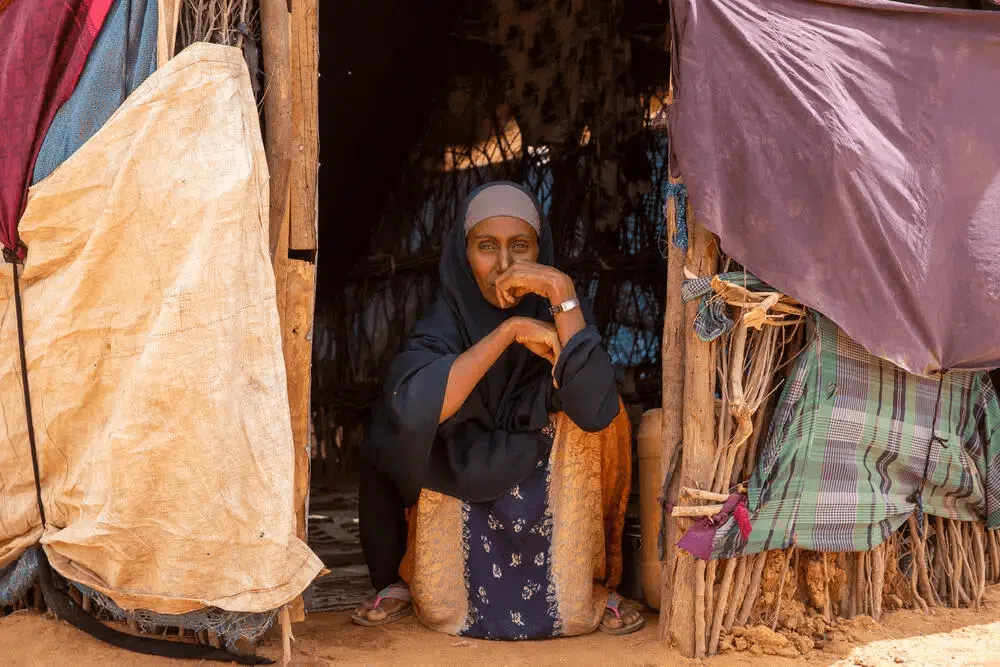
© UNHCR/Charity Nzomo
Halima Hussein, a 28-year-old mother-of-three, fled the drought in Somalia to Kenya’s Dadaab refugee camp in October 2022. Fueled by climate change, the drought gripping the Horn of Africa has been the worst in 40 years following five consecutive failed rainy seasons. In Somalia, 607,300 people were newly displaced due to the drought and persistent insecurity, with the situation deteriorating as the year progressed. Refugees crossed from Somalia into drought-affected areas of Kenya and Ethiopia where local host communities were also struggling with shortages of food and water.
Originally published by UNHCR on 14 June 2023.



